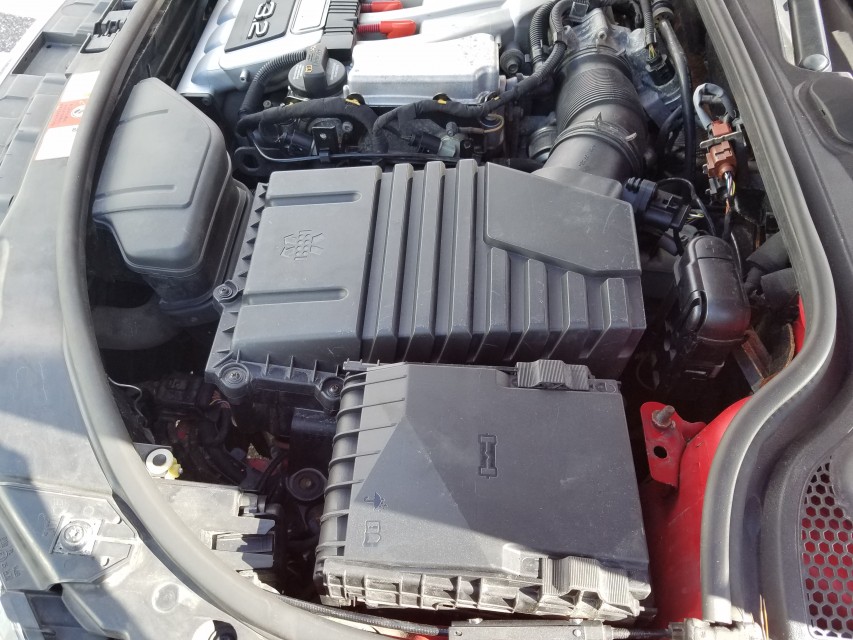
Audi owners may complain that the transmission is not shifting properly or is not very responsive when you press the gas pedal.
In extreme cases, your Audi may even go into limp mode and no longer change gears.
If your Audi automatic transmission has been having problems changing gears or never seems to know which gear it should be in, you should try to reset the transmission setting to factory defaults.
If your Audi is an older model year, disconnecting the battery will reset the ECU and Transmission modules.
Disconnecting the battery will not reset your ECU and transmission on newer vehicles. Instead, try the following procedure.
Reset Audi ECU / Transmission
The next simple step is to reset Audi by pressing the gas pedal.
Step 1: Press the gas pedal to the floor.
Step 2: Turn on the ignition but do not start the engine. Suppose your car has Start/Stop press the gas pedal but not press the brake pedal. Only press the START button.
Step 3: Keep the gas pedal pressed for at least 15 seconds.
Step 4: Turn off the ignition. Release the gas pedal. Wait a couple of minutes and restart the engine.
Step 5: Drive your Audi carefully and allow it to change gears at low RPM for the first 10 minutes.
If the method above does not work on your Audi, the only way to reset the transmission would be with a diagnostic scanner.
Below you will find instructions on how to reset Audi transmission settings using various tools.
Reset Audi Transmission using VAG-COM VCDS
The best way to reset Audi transmission adaptation values is to use an OBD2 scanner designed for Audi / VW vehicles.
Below you will find instructions on how to reset Audi transmission using VAG-COM and VCDS software on cnautotool.
Make sure there are no fault codes stored in the ECU or transmission module.
In summary, you will need to go under Engine [01] and Transmission [02], go to Basic Settings, and reset both Kick Down Alignment and Throttle Body Alignment.
Step 1: Turn on the ignition but not start the engine. Do not press the gas pedal yet.
Step 2: Go to [02 – Auto Trans]
Step 3: [Basic Settings – 04] or [Basic Settings – 01] for 09G Trans
Step 4: Set Group to “000” or “060”
Step 5: Select Go and press the gas pedal all the way down. Keep gas pedal pressed for at least 4 seconds—no need to press the gas pedal on 09G.
Step 6: Hit DONE and release the gas pedal.
Alternative method
Step 1: Turn on ignition.
Step 2: Load your VCDS software.
Step 3: Select [01 – Engine]
Step 4: Go to [Basic Settings – 04]
Step 5: Set Group to “063” and “060”
Step 6: Press GO and wait for the ADP. OK to display under Throttle Body Alignment Status.
Step 7: Go back and release the gas pedal.
After your reset your Audi
Once the Audi adaptation reset procedure has been completed, drive your Audi carefully for the next few miles.
Step 1: Drie the car for a couple of minutes without any hard acceleration.
Step 2: Stop the vehicle and switch the shifter from Neutral to Drive to Reverse a few times.
Step 3: Drive your Audi for another 15 minutes with minimal load on the engine. Be easy on the gas pedal. Shifting between gears should happen at low RPMs.
This procedure will return the ECU and transmission to factory settings.
While carrying the reset will not cause any damage, do not expect it to cure all problems.
You may still experience problems after the transmission has been reset to factory settings.
It is worth considering updating the software for the transmission control module.
It can sometimes resolve erratic shifting. This is a procedure that needs to be performed by your Audi dealer.
If the problem persists, have a mechanic diagnose your Audi automatic transmission.
It may be low in transmission fluid, have worn clutches, or a faulty valve body.
These instructions work on various Audi models, including A1 A3 A4 A5 A6 A7 Q3 Q5 Q7 TT but not all model years.


Leave a Reply